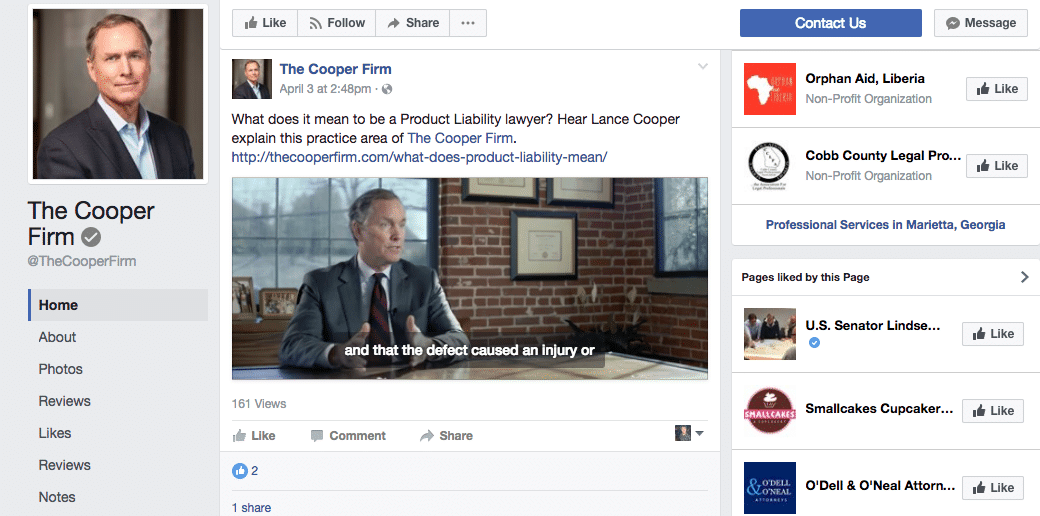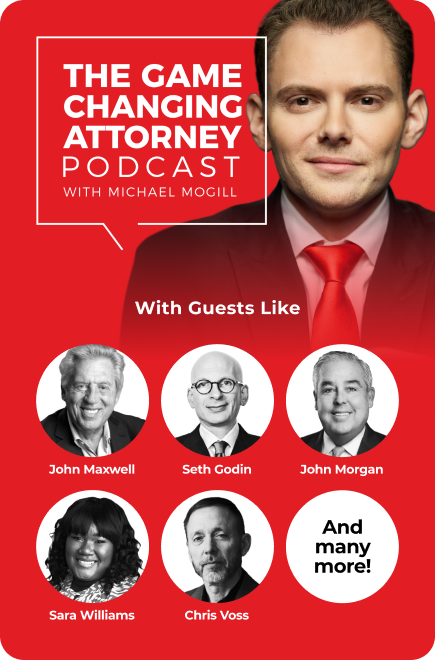
Among the most profound marketing shifts in recent years is the idea that engagement should take priority over selling your legal services.
The change has become necessary as consumers keep gaining greater power. The fact is, they control the “buying” process in today’s information-rich world.
Yet just sharing helpful insight in your marketing isn’t enough to create engagement.
You must do so in a way that makes your message memorable and keeps prospects craving more. To do this, you need to understand what your prospects want from you.
You see, at the root of human behavior is the desire to avoid pain and pursue pleasure.
It’s the driving force behind all decisions.
So your marketing’s job is to lead prospects from where they are now (pain) to where they want to be (pleasure). The closer your content gets them to their desired end result, the greater the bond you create.
Furthermore, as prospects see progress, they associate this improvement with your law firm. As such, they seek more from you, increasing the odds that they’ll hire you to get their desired outcome.
Of course, there are methods for boosting your chances even more. One way is to include dangers in your content. Explain to prospects the risks of going on the journey without you.
This helps position your legal services as the weapon they need to combat the risks.
You see, research shows our brain has a “negativity bias” — we’re hard-wired to be overly sensitive to negativity. In fact, our decisions are more influenced by negative news than positive news.
Political advertising is a perfect example.
Candidates blow through huge advertising budgets just to explain why we shouldn’t elect their opponent.
Why?
Because negativity grabs our attention.
It evokes an intense emotional response, and we remember this type of information or experiences longer.
“High-arousal emotions, like anger and anxiety, drive us to action,” says Jonah Berger, Wharton School marketing professor and author of Contagious: Why Things Catch On.
While researching ideas for his book, Berger analyzed the sharing of 7,500 articles from The New York Times. For more than six months, he tracked which topics people emailed the most off the publication’s website.
What he discovered is especially helpful if one of your marketing goals is to get people to share your content.

You see, while negativity can trigger action, Berger found that positive themes are more likely to get shared. The reason why is logical — people don’t want to be seen as a downer by sharing negative information.
Another thought worth considering is the number of claims in your content. While being generous with your knowledge is important, how much you say impacts the way prospects perceive your messaging.
Of course, the common theory is the more reasons or claims you present, the better. Yet scientific research proves otherwise.
Professor Kurt Carlson of Georgetown University and his colleague, Suzanne Shu of the University of California, Los Angeles, discovered that positive claims can actually work against you.
In several experiments, they presented consumers with descriptions for all types of products. Each one contained varying amounts of positive claims.
They found that three claims is the optimal amount.
When the messaging goes beyond this number, consumers quickly turn skeptical.
Here’s an excerpt from the study:
“Having some claims can be seen as informative, but a large number of claims is easily perceived as a persuasion tactic. Consistent with the persuasion knowledge model, once a target perceives that a message that might otherwise have been seen as informative is actually a persuasion tactic, the meaning of the message is switched and coping begins.”
Coincidentally, the rule of three is a common principle used in writing. Three items is the smallest amount of information needed to create a pattern.
The combination of brevity and a pattern results in messaging that’s memorable and engaging. So think in groups of three when creating your content.
You may notice several advertising slogans follow this principle …
- Snap! Crackle! Pop!
- A Mars a day helps you work, rest and play.
- The Few. The Proud. The Marines.
When presented in groups of three, information is just easier to process and remember …
- Stop, drop and roll.
- Life, liberty and the pursuit of happiness.
- Location, location, location.
Steve Jobs was well-known for using the rule of three when introducing new Apple products. For example, when he revealed the iPad 2 in 2011, he described it as “thinner, lighter and faster.”
Look at the Apple website, and you’ll see this concept still carries over today.
The AirPods are “Wireless. Effortless. Magical.”
The MacBook Pro is “the perfect choice for mixing a track on the fly, editing video on location, or enjoying a movie on the go.”
Even the newest iPad Pro is “Super. Computer. In Two Sizes.”
So as we wrap up, here’s a final point to remember:
If you want engagement from prospects, you must also have your content on the appropriate platforms.
Of course, your website is a given. But if it isn’t getting consistent traffic, your content isn’t being seen.
So think about other spots too.

Where do your best prospects seek out information? How do they prefer to consume content?
For attorneys, we’ve found YouTube and Facebook (in addition to your law firm’s website) to be valuable platforms for getting cases.
Both allow you to deliver useful messaging in a manner that appeals to high-value prospects. Furthermore, because of each platform’s built-in commenting and sharing features, you increase the probability of engagement.
Take advantage of these features and pay attention to peak times when engagement is highest. Keep in mind, you may see the most engagement on weekends.
The more content you put out, the quicker you’ll discover what topics and engagement practices work best for your law firm.
So stay consistent, make your marketing messages memorable and keep your prospects craving more.
Have any questions about marketing your law firm?
Schedule a free legal video strategy session with our marketing experts today.







